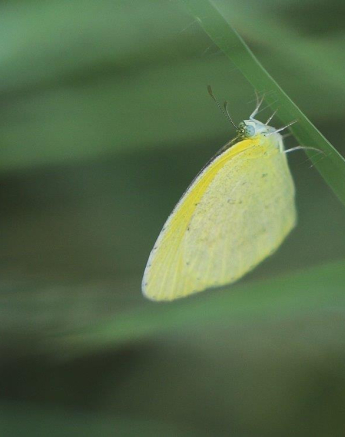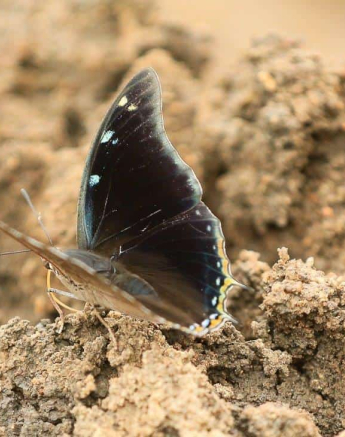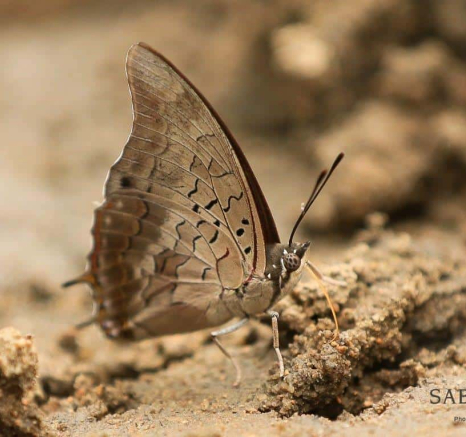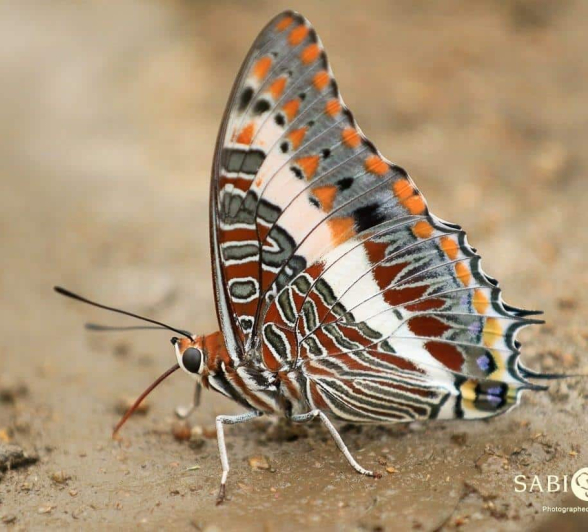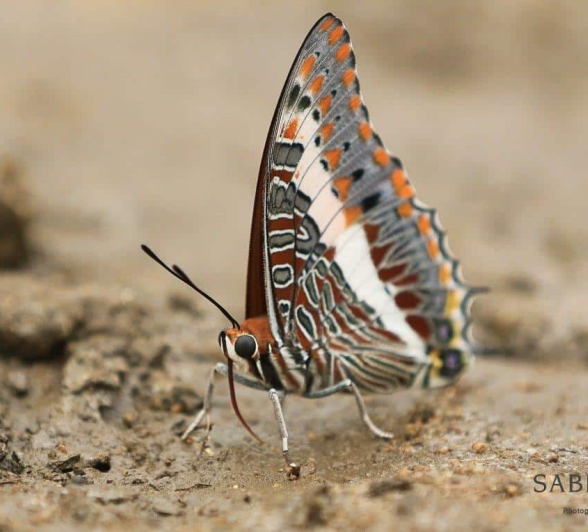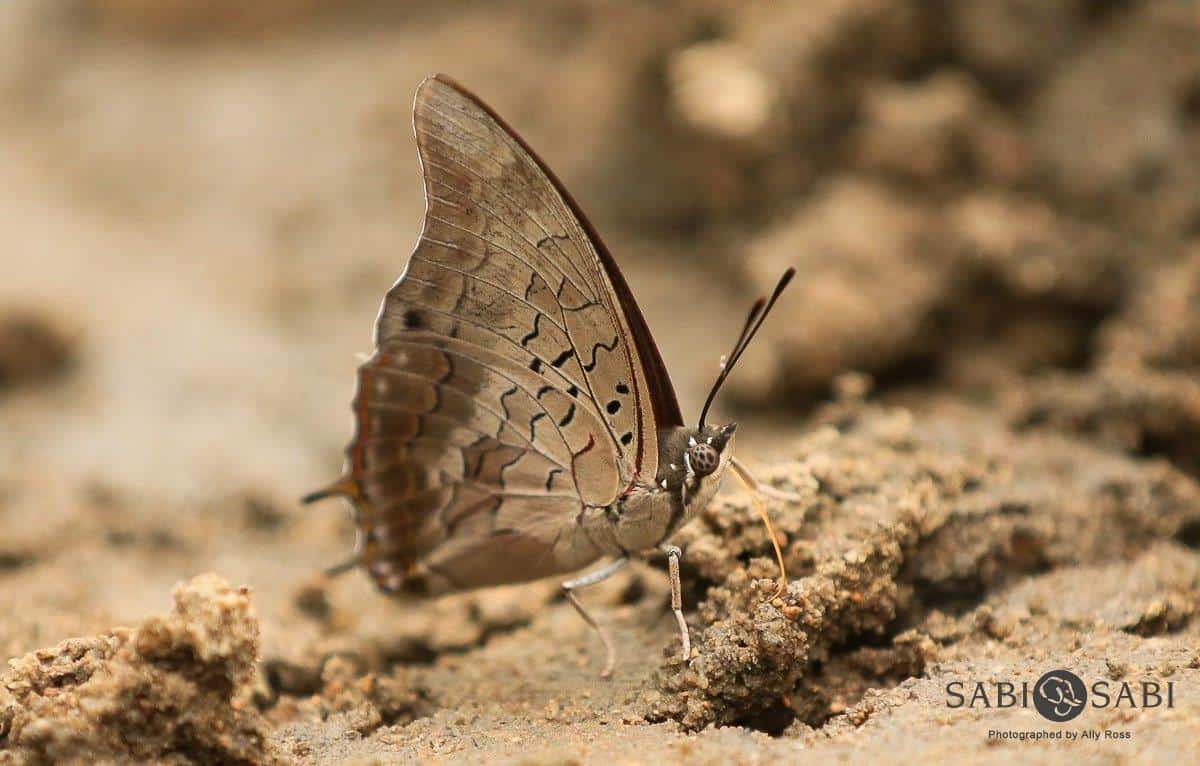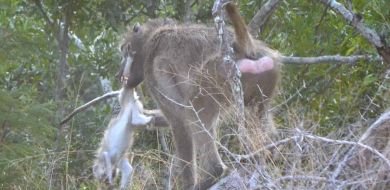Butterfly
on May 10, 2019In a world obsessed with size, beauty lies within the smaller details. Butterflies fly this point home.
Order: Lepidoptera
Kingdom: Animalia
Phylum: Euarthropoda
Class: Insecta
If you happen to come on safari during our summer months, you will notice an additional splash of colour to the already lush and vibrant bushveld. The creatures responsible for these eye-catching flashes, are butterflies.
To the untrained eye, one may confuse butterflies and moths... so before we continue, let’s look at a couple identifying features that separate the two species:
- The antennae of the butterflies are usually clubbed at the tip whereas moths, the antennae may be feathery in appearance.
- Most butterflies are diurnal, meaning they are active during the day, whereas the moths are nocturnal and fly at night. However, there are many exceptions to both groups, with some moths flying by day and some butterflies flying at dusk and dawn. This peak activity during twilight hours is known as “Crepuscular activity”.
- At rest, butterflies close their wings against each other, over the back of their bodies whereas moths tend to rest with their wing set against the body with the forewings covering the hind wings.
- Lastly, butterflies do not possess a frenulum, which is a device on the wings of moths linking the fore and hindwings together while in flight.
Over 660 species of butterfly are known from South Africa, a large portion of which are endemic. So, trust me when I say that trying to find, identify and photograph these creatures is quite the experience.
“Butterflying” is a bit like birding, except harder. I do enjoy my birds so when I decided to explore butterflies, I was up for the challenge.
Just like birds, butterfly families consist of the easy-to-identify, big and colorful ones that we all love to watch and follow but you also get the smaller, more inconspicuous ones that are a dull and brown. In birding we refer to this as an LBJ (little brown job).
There is just one problem; butterflies seem to have taken this a step further! Not only do you get little brown jobs, you get little blue jobs, yellow jobs and about 100 little white jobs too!
I managed to capture some of the species you’re likely to see on a summer safari to Sabi Sabi.
African Migrant – Catopsilia florella
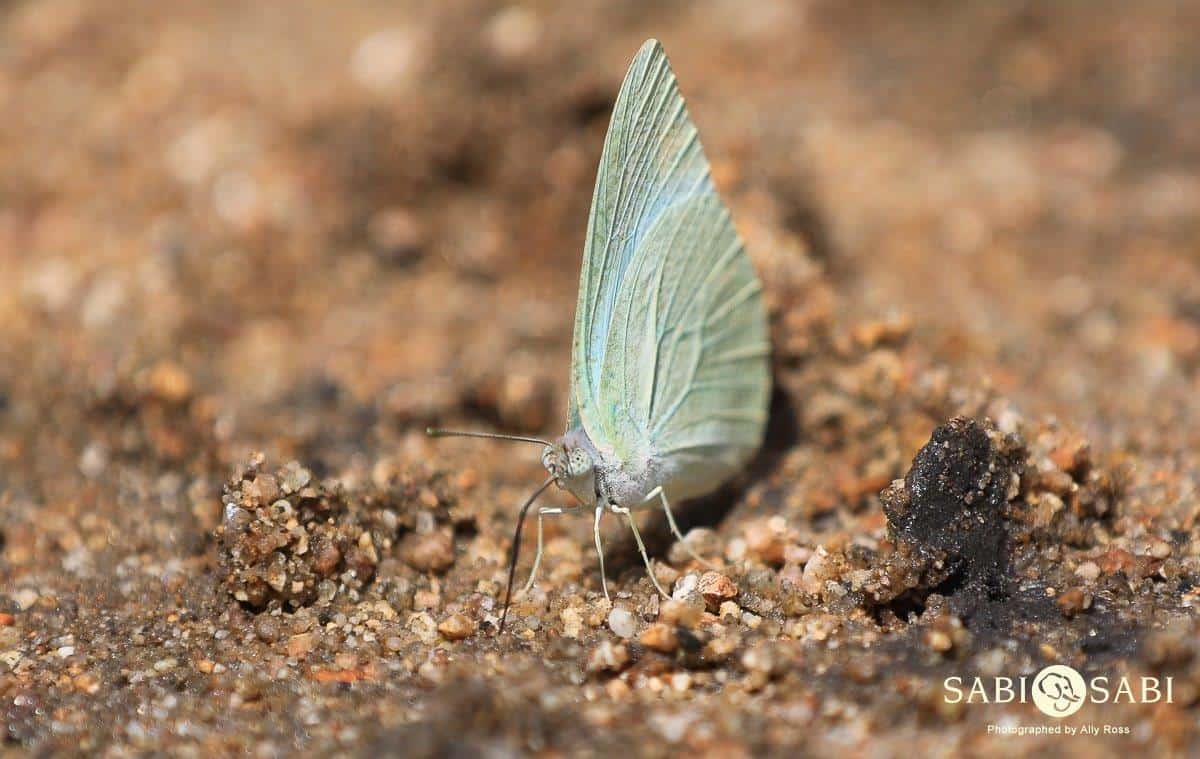
As the common name suggests, the African Migrant, is a butterfly that periodically undertakes large-scale migrations. One recorded in April 1966 advanced on a 650km front through the Transkei and Natal and was estimated to have consisted of many hundreds of thousands of individuals. This particular species is wide spread throughout Africa and can be found, on the wing, any time of the year.
Autumn-leaf Vagrant – Eronia leda
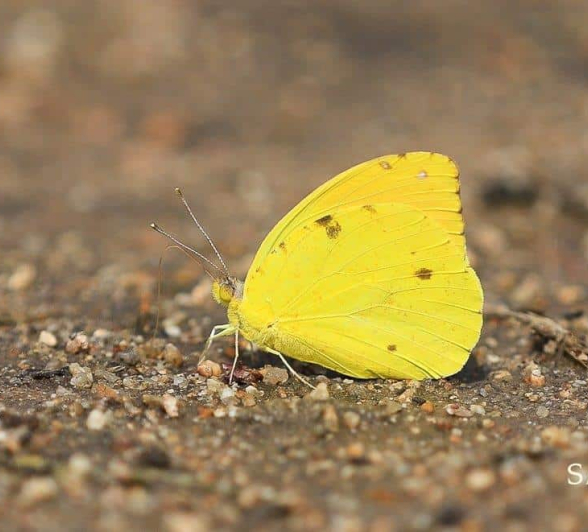
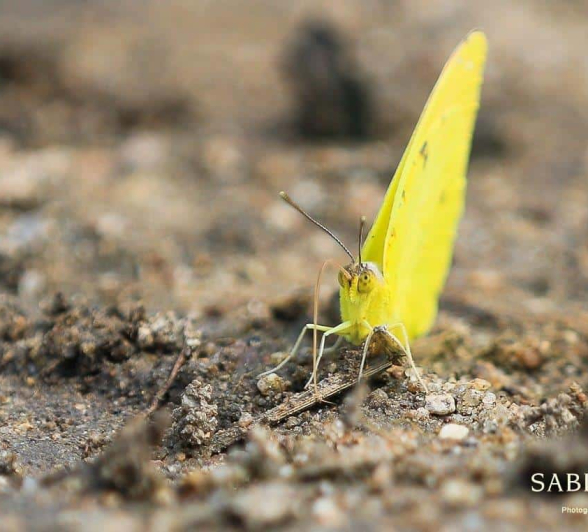
This species proved tricky to photograph as they are incredibly fast and seldom stop during flight. They are found all year round and are easily identified by the bright sun-flower yellow and flashes of orange that are visible, on the upper-side, in both male and female.
Brown-veined White – Belenois aurota aurota
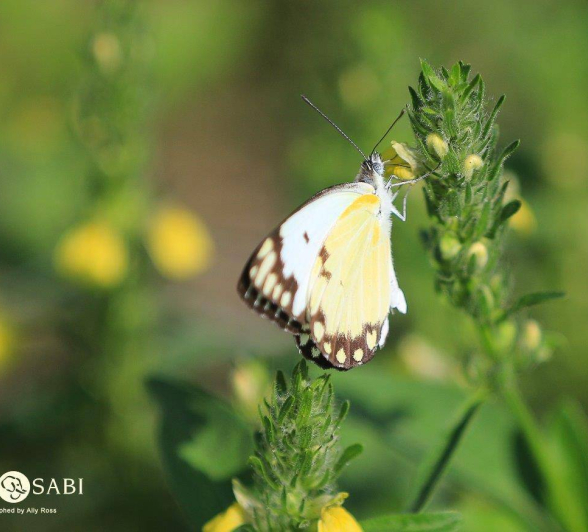
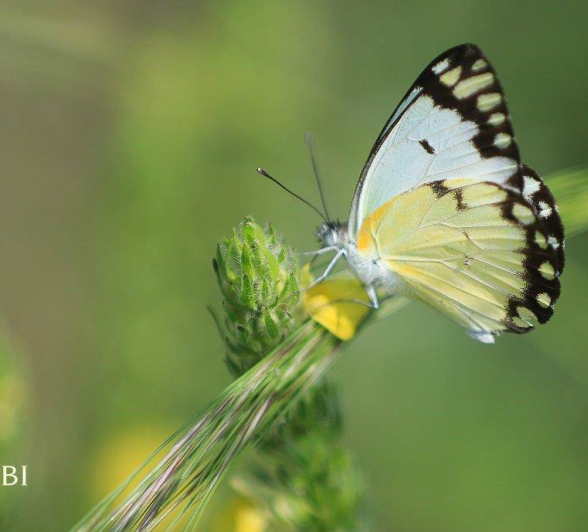
The Brown-veined White is probably the most common of the little white jobs. They occur over the greater part of Africa. Their mass migration North-east attracts a fair amount of bird species creating a feeding frenzy when they are moving by the millions.
Puddle Party
You will often see a gathering of butterflies in certain muddy areas; we refer to this as a “puddle party”. The fascinating thing is it is mostly adult male butterflies that frequent these wet spots.
Mud puddles make contribution to butterfly reproduction. The males will take in salts and minerals from the wet soil, which strengthen their sperm and encourage breeding. Nutrients are then transferred to the females via sperm, thereby improving the viability of the eggs.
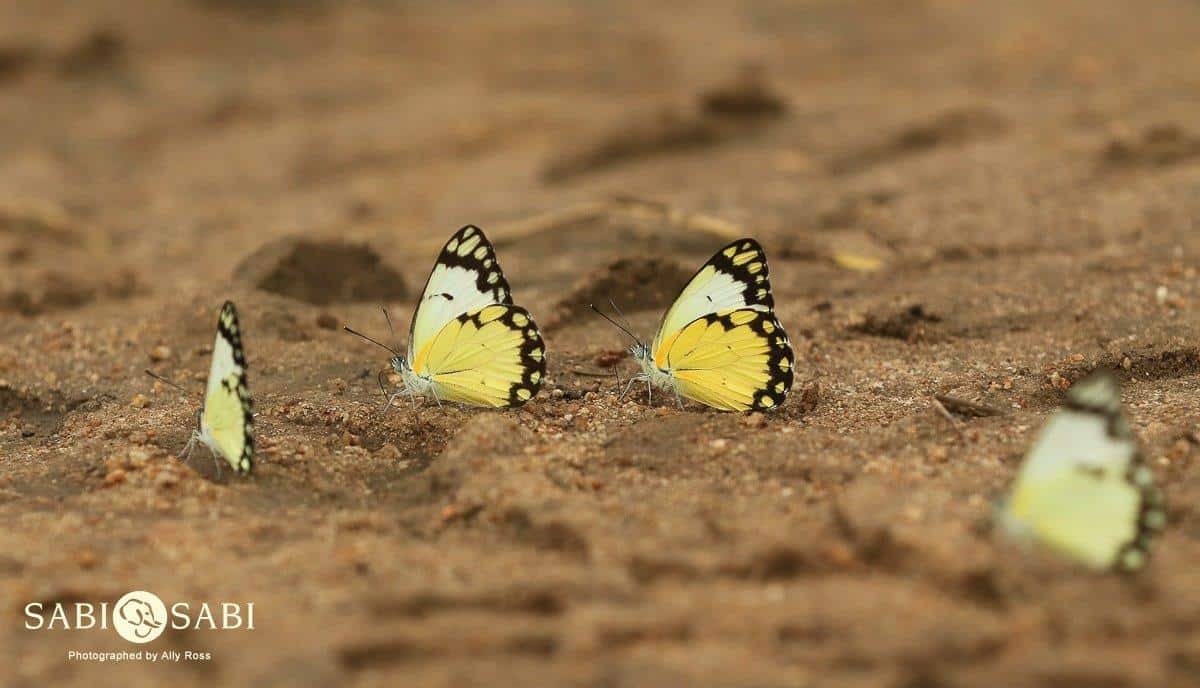
African Monarch – Danaus chrysippus aegyptius
Also known as a Southern Milkweed Butterfly is an eye-catching specimen to look at. Don’t be fooled by the beautiful coloration of the Monarch - they’re toxic! We refer to these patterns and colors as “aposematic coloration.” This is a term used to describe colours and patterns used to warn predators that they are unpalatable and possibly dangerous. They acquire these toxins during the larval stage. The larva feed on toxic plants, such as the milk weed, assimilating the toxin into their bodies.
Studies have shown that some vertebrates, including insectivorous birds, associate greens and blues with safety and inherently regard red, orange and yellow as signs of danger. Birds can remember the color and patterns of butterflies and associate them with pleasurable and unpleasant experiences.
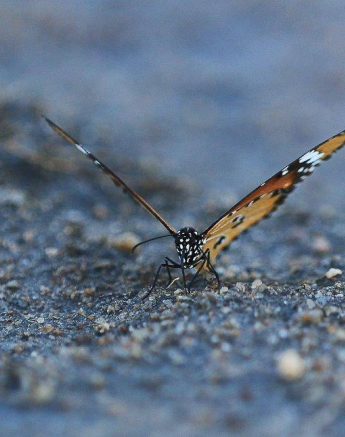
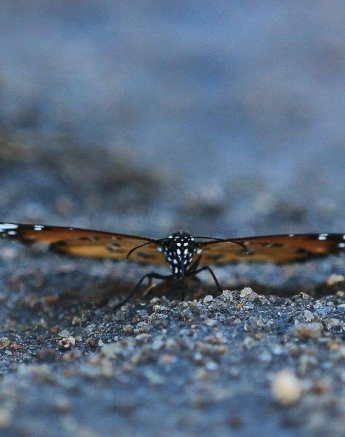
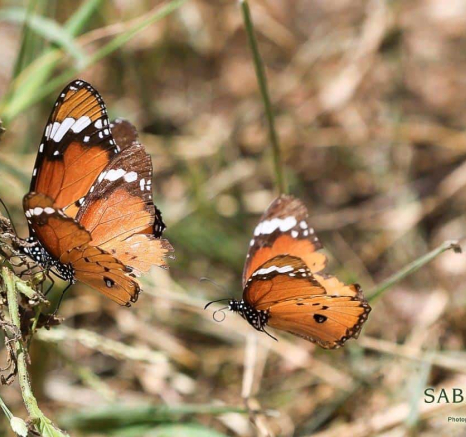
Importance of butterflies in our ecosystem
As our bee population declines, the role of a butterfly becomes more vital. Over 90% of plants need a pollinator to reproduce and without these wonderful creatures, many plants would be unable to reproduce and we would begin to witness a massive decline in our plant population. This loss of plant life would have a dramatic effect on both human and animal life.
Butterflies are also responsible for genetic variation in plant species they collect nectar from. With migratory butterflies travelling far distances, this allows pollen to be shared across groups of plants which are far away from one another.
Butterflies also act as a lower member of the food chain, providing a hearty meal for animals such as birds and mice. Should their numbers decline, we will witness a decline in the many animals that depend on them as a food source. We refer to this as the “butterfly effect”. Their decline will continue to affect the ecosystem up until the trophic levels. Nearly two thirds of the ecosystem can be linked back to the butterfly in the food chain. The loss of a seemingly insignificant insect has the ability to collapse an entire ecosystem.
Habitat change and loss, as well as climate change, are one of the biggest threats towards butterflies today. Butterflies are incredibly sensitive towards change and require ideal conditions for the eggs to develop and mature. While climate change has caused a significant amount of damage, we too are responsible for their decline. Our use of pesticides and expansion of genetically modified crops plays a pivotal role in their declining numbers.
So just remember that an abundance of butterflies means a healthy ecosystem, let’s try and preserve the beauty that flutters around us. Let’s ensure their “effect” to be a positive one.
Most memorable sighting
On a morning safari, I was fortunate enough to have guests that were as intrigued about butterflies as I was. So, we decided to spend the better half of our morning capturing the many butterfly species that frequent Sabi Sabi. It was a great learning experience for all, as well as being incredible tranquil, we returned to the lodge with fantastic photos and plenty species checked off the list.
Have a look at some special species also found here at Sabi Sabi – Charaxes Species.
